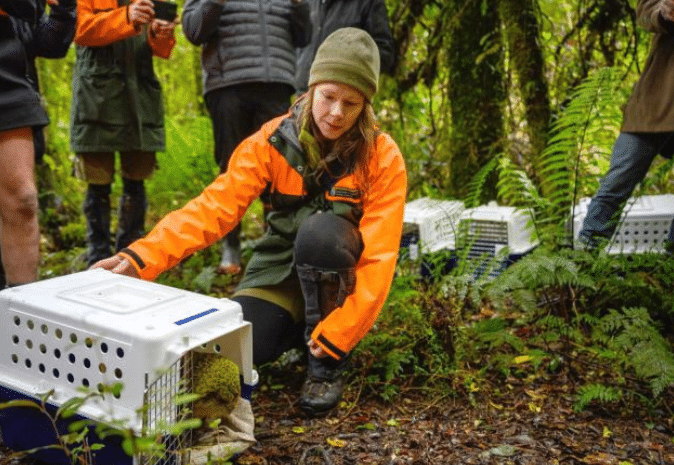- Four male kakapo relocated to Coal Island to test new habitat suitability.
- DOC, Ngai Tahu, and Coal Island Trust collaborate for kakapo conservation.
- Trial aims to relieve population pressure on existing breeding islands.
In a bid to address the kakapo habitat shortage, the Department of Conservation (DOC), Ngai Tahu, and the Coal Island Trust have moved four male kakapo to Coal Island in Fiordland. This initiative seeks to determine if the 1163-hectare island can eventually support a larger breeding population.
DOC Operations Manager for kakapo Deidre Vercoe emphasised the importance of this move, stating, “With a breeding season predicted for 2026, we are looking at new sites to relieve population pressure on the islands that kakapo currently live on.” Vercoe noted Coal Island’s potential due to its habitat similarity and proximity to existing breeding sites.
The Coal Island Trust has invested decades in making the island a sanctuary for native species. Trust Chair Ali King highlighted the significance of the kakapo transfer, saying, “So many trustees and volunteers have worked tirelessly for the past twenty years to help make this day possible – this is a huge milestone in our history and will also have deep significance for our iwi partners. We’re proud to have fostered such a strong partnership with DOC, local iwi and other Fiordland entities.”
The island, known to Ngai Tahu as Te Puka-Hereka, has seen the successful reintroduction of other native birds such as the Haast tokoeka/kiwi, yellowhead/mohua, and New Zealand robin/toutouwai over the years. Ngai Tahu’s representative on the kakapo Recovery Group, Tane Davis, expressed hope for the trial’s success, saying, “This mahi gives us hope that this trial will be successful and will extend the available habitat for kakapo in future.”
Vercoe acknowledged the challenges involved, including the risk of predator reinvasion from the mainland. Although Coal Island’s trapping network has been effective, stoats occasionally appear. “Ultimately, we need more predator-free sites to give kakapo the best chance to thrive,” Vercoe said. She added that the current trial, involving fully grown males weighing between 2-4 kg, aims to assess the risk posed by low stoat density and gather valuable insights for future habitat expansion.
The move is part of the kakapo Recovery Programme’s broader future sites plan. Concurrently, a separate trial at Sanctuary Mountain Maungatautari is exploring the potential of a fenced sanctuary for kakapo.
Since 2016, the kakapo Recovery Programme has received substantial support from National Partner Meridian Energy, which provides funding, electrical infrastructure, technology, and volunteer assistance.


